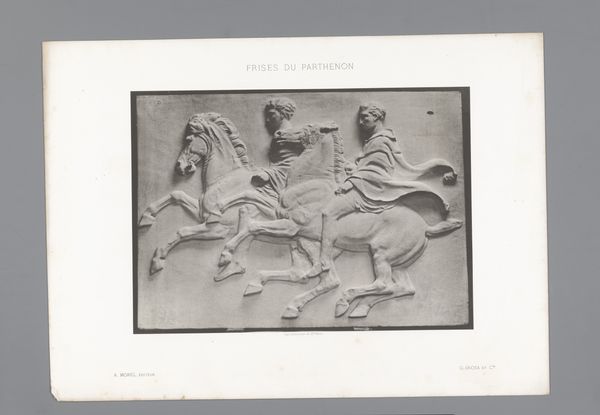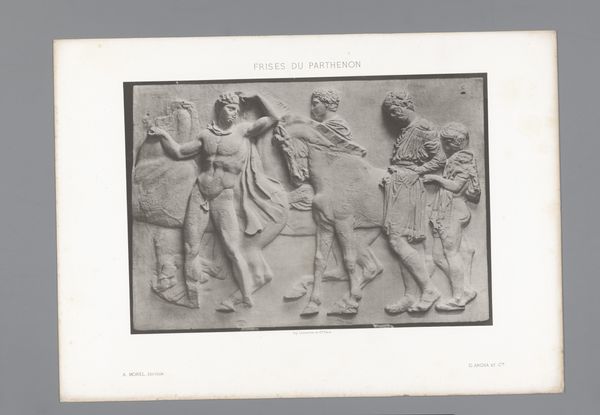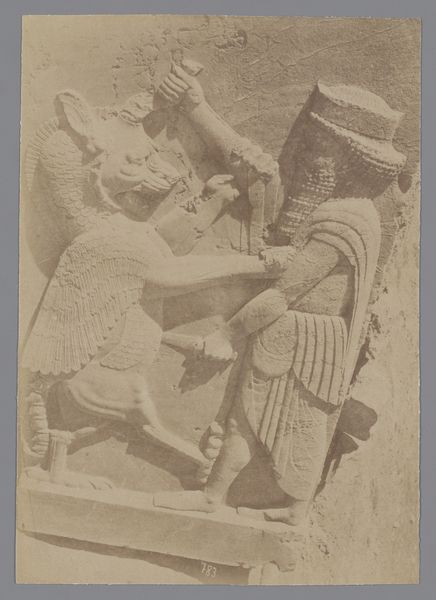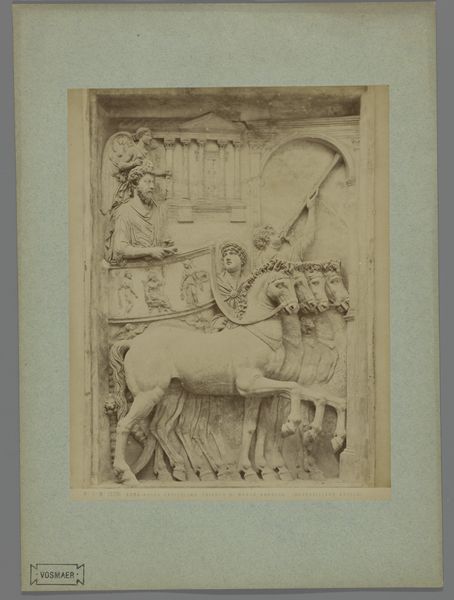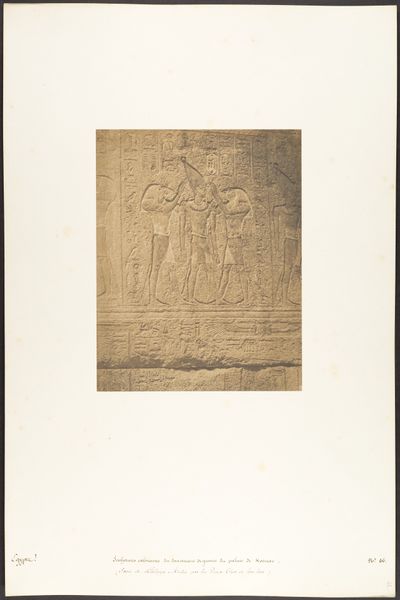
Deel van het fries van het Parthenon in Athene, afgebeeld twee ruiters before 1868
0:00
0:00
print, relief, photography, sculpture, gelatin-silver-print
#
narrative-art
# print
#
greek-and-roman-art
#
relief
#
landscape
#
figuration
#
photography
#
geometric
#
ancient-mediterranean
#
sculpture
#
gelatin-silver-print
#
history-painting
#
monochrome
Dimensions: height 240 mm, width 325 mm
Copyright: Rijks Museum: Open Domain
Editor: Here we have a print of a section of the Parthenon frieze in Athens, showing two riders, created before 1868, probably a gelatin silver print. I’m struck by how dynamic the composition is, even though it’s a relief sculpture. How do you interpret this work? Curator: It’s compelling to consider this image not just as a representation of classical art but as a document reflecting its own historical context of production. Think about the 19th century's fascination with ancient Greece, fueled by colonial desires and a need to establish cultural heritage. Editor: In what ways do you think it reinforces those desires? Curator: This print participates in a visual economy that separates and displays, turning a once-integrated architectural element into a commodity. The frieze, originally part of a temple dedicated to Athena, is now fragmented and re-presented for consumption. What do you think that fragmentation does? Editor: It feels like it isolates this single part of the narrative. It perhaps elevates the status of those depicted: these strong male riders in this removed photograph feel like idealized symbols and powerful subjects for their own sake, and removed from any kind of collaborative environment. Curator: Precisely! This isolation transforms the riders into symbols of power and idealised masculinity, divorced from the collaborative civic context of the Panathenaic procession the frieze originally depicted. How does this image speak to contemporary debates around cultural appropriation and repatriation of artifacts? Editor: It makes you wonder about the ethics of display, and the power dynamics inherent in how we frame and present history. It highlights the politics of who gets to tell these stories and in what way. I will look at this type of imagery differently now. Curator: Indeed, seeing this print encourages us to critically examine not only classical art but also the historical lenses through which we perceive it and disseminate it today.
Comments
No comments
Be the first to comment and join the conversation on the ultimate creative platform.


